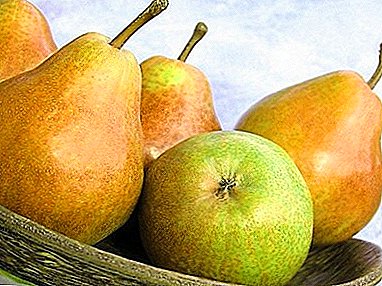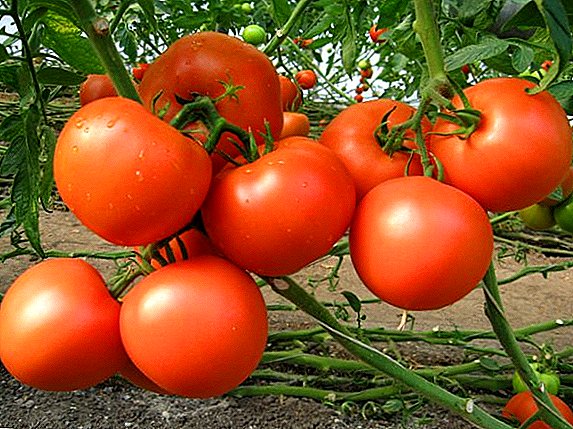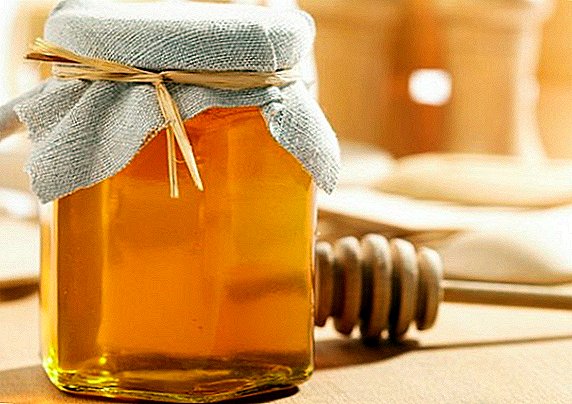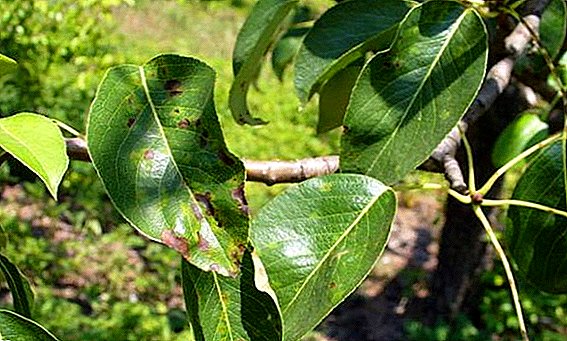 A pear is a beautiful tree that can become the highlight of any garden.
A pear is a beautiful tree that can become the highlight of any garden.
But what to do when the beloved tree is suddenly struck by the scab?
What is dangerous and where does it come from
Scab - A common fungal disease, often found in trees of temperate climate. The causative agent of the disease is the marsupial mushroom Venturia pirina. The danger is that the flowers of the plant with this disease can not form the ovary and fall.
Did you know? It’s hard to believe, but the closest relative of the pear is a rose.
If you miss this signal and do not treat the pear, the scab moves to the leaves of the tree and they also crumble. All this negatively affects the quality of the future harvest, because the fruit buds are laid incorrectly. If the plants that bear fruit are infected with the scab, then dark stains with bloom appear on the fruits, spoiling the taste of the fruit. 
Learn how to deal with a bacterial burn, rust, and gall mites that hit the pear.
Signs of defeat
Signs of the disease can be seen on all aboveground parts of pear - shoots, fruits, flowers and leaves. When the disease is just beginning to develop, small round spots appear on the leaves, which eventually darken and fall on other parts of the plant. The photo below shows what the disease looks like. With the further development of scab, the plant is covered with large brown spots, and the surface of the fruit is cracked. As a result, fruits grow small and with deep cracks.
Did you know? Pear tree is widely used for making furniture and musical instruments. Also, kitchen appliances are often made of it, because such a tree does not absorb odors and is not deformed by moisture.
Preventive measures
In order not to wonder how to treat a scab on a pear, you should take preventive measures in time. Remember that prevention is beneficial even if the plant is healthy and brings a good harvest. After all, there is always the risk of contracting the disease from neighbors who are nearby. 
Scab - a disease that affects many crops: apple, apricot, cherry, cherry, mountain ash, sea buckthorn, willow, potatoes.
The main rules for protecting pears from scab:
- The plant should grow in a well-lit and ventilated place. It is better if the trees are far away from each other.
- It is necessary to monitor the integrity of the tree, because broken branches and various cracks are the basis for the development of the disease.
- Regularly (once a year) it is necessary to remove weak branches and handle cracks with a special liquid.
- Fruits that fall from the pear to the ground should be immediately collected to prevent fungus from falling on them.
- After harvesting the entire harvest, it is necessary to carry out general garden cleaning. So, you should burn all the leaves, because they can later become the cause of the plant disease.
Important! If signs of the disease have already appeared, preventive measures will not save the situation. In this case, you should apply a special tool for scab on a pear.
How to deal with the "scourge"
Any disease in trees requires complex measures, and scab is no exception. In order to once and for all get rid of this disease should:
- spray the plant with blue vitriol in combination with lime. To hold such an event should be several times a year. Also, good results are obtained by alternately spraying Bordeaux liquid (you can also use copper oxychloride or colloidal sulfur) and copper sulphate;
- regularly get rid of the affected parts of the tree (especially if it is young shoots);
- destroy the spoiled fruit.
 It is not enough to know what to treat pears from scab, because there is also a certain tree processing schedule. In severe cases, the tree requires 5 treatments per year:
It is not enough to know what to treat pears from scab, because there is also a certain tree processing schedule. In severe cases, the tree requires 5 treatments per year:- When the kidneys are just forming and swelling. Copper sulphate treatment is recommended.
- When buds begin to form. Well suited fungicide "Skor."
- When the plant ceases to bloom. Again, the fungicide "Skor" is ideal.
- Half a month after the last treatment.
- This spraying is carried out on winter pear varieties at the beginning of autumn or at the end of summer.
Important! Remember that it is necessary to alternate drugs, because unidirectional spraying is ineffective.
Resistant varieties
In order not to think about how to deal with scab on a pear, you can plant varieties that are resistant to the disease. So, choosing seedlings, one should pay attention to the following varieties: "Belarusian Late", "Annushka", "Yanvarskaya", "Rusanovskaya", "Oryol Beauty", "Yesininskaya", "Nerussa" and others. All these varieties have different resistance to the disease and can not give one hundred percent certainty that scab will not appear on them.
Read also about the features of growing and fruiting pear varieties: "Duchess", "Bergamot", "Avgustovskaya Dew", "Fairy Tale", "Otradnenskaya", "Elena", "Lada", "Just Maria", "Nika", "Severyanka" "," Krasulya "," Rogneda "," Kokinskaya "," Marble "," Cathedral ".
Remember, to grow a good harvest and keep your pears healthy, you need to regularly carry out prevention methods. In the event that the fungus has already struck the plant, it is necessary to immediately apply scab control measures. In gratitude for your care, the trees will delight you with their beauty, longevity and tasty fruits.












